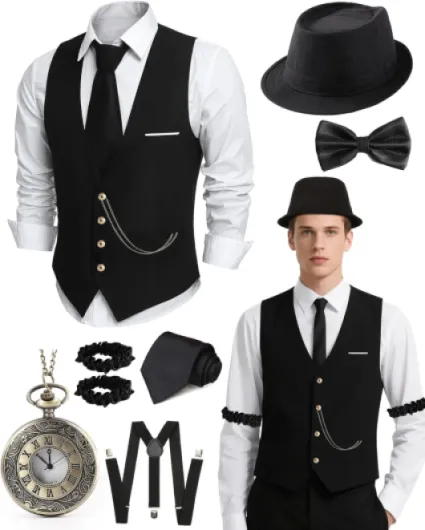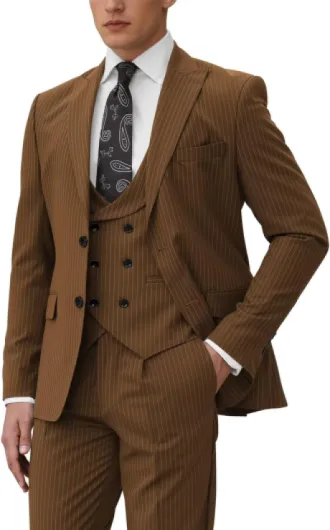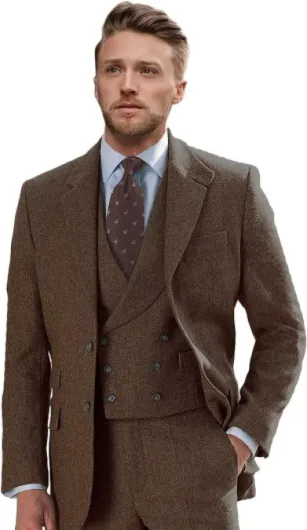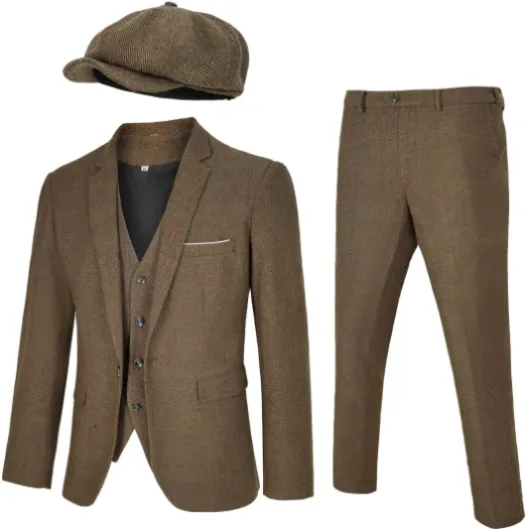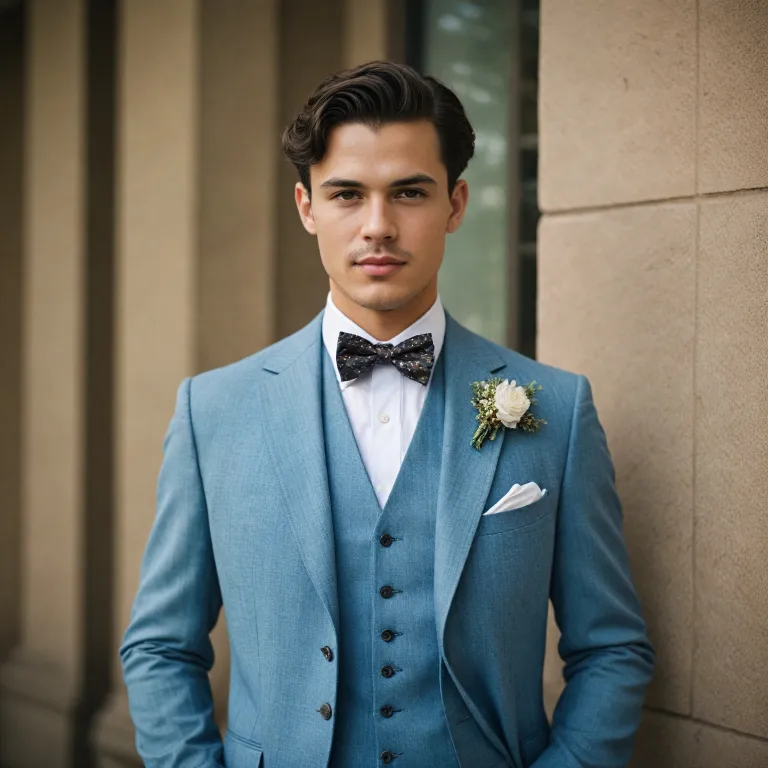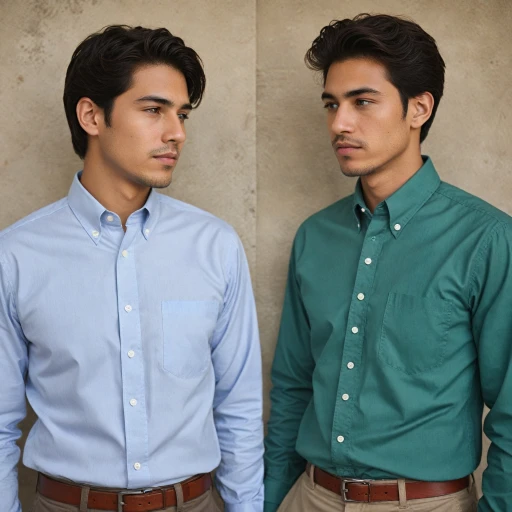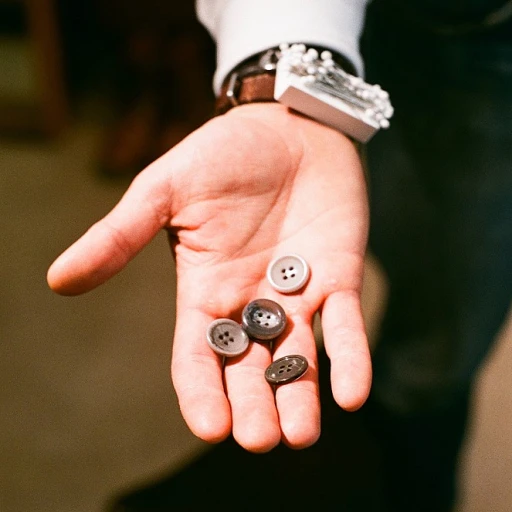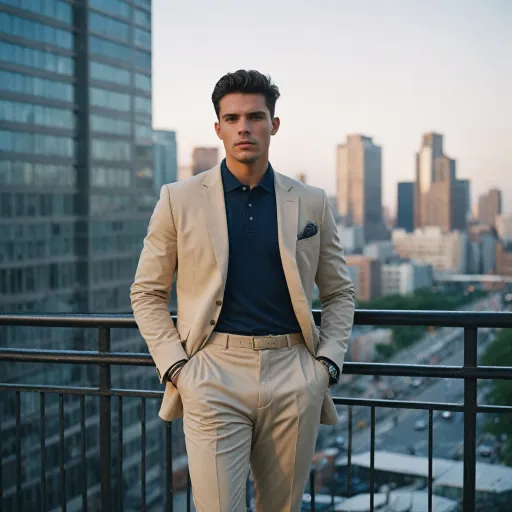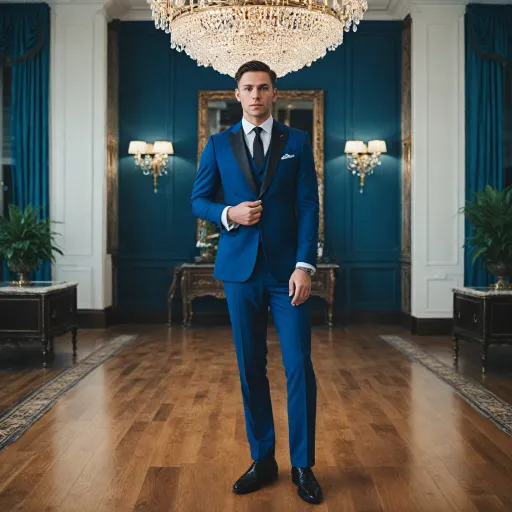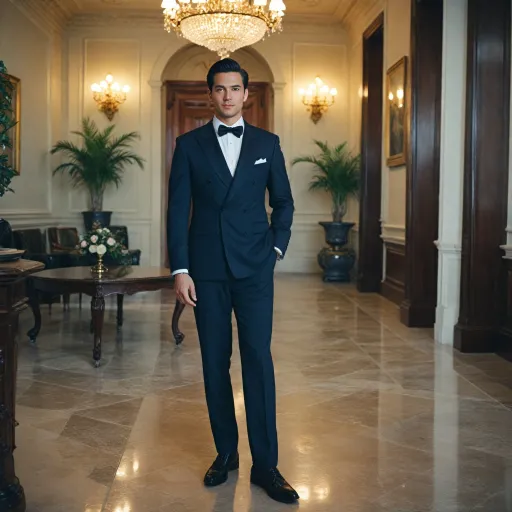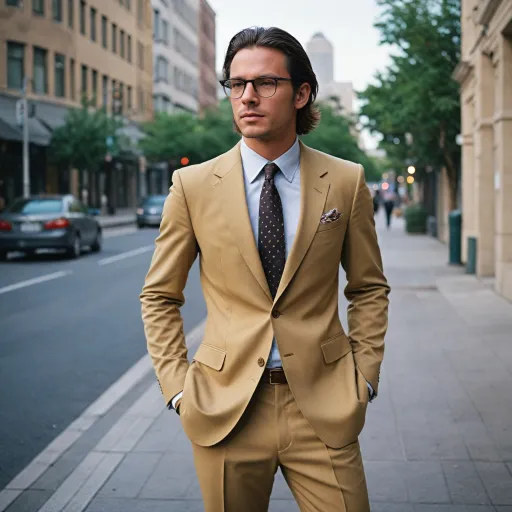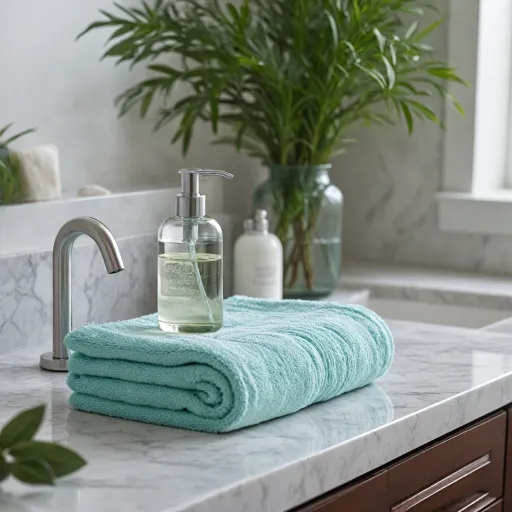
Origins of the classic suit silhouette
The birth of the modern mens suit
The 1920s marked a turning point in mens fashion, especially in the evolution of the classic suit silhouette. This era saw the transition from the heavy, structured styles of the previous decades to a more relaxed, yet sharply tailored look. The introduction of the three piece suit became a defining feature, with men embracing the combination of suit jacket, vest, and pants for both daily wear and special occasions like prom or wedding events. The fit became slimmer, reflecting a new sense of sophistication and confidence among men.
In the United Kingdom, the influence of tailoring houses on Savile Row helped set the standard for what a men suit should be. The focus was on clean lines, a well-fitted jacket, and a vest that added depth to the overall look. This period also saw the rise of herringbone and tweed fabrics, which added texture and character to mens suits. The price of a quality product was often seen as a reflection of status, and owning a well-made suit was a point of pride for many men.
The popularity of the peaky blinders style, with its iconic tweed suit and flat cap, further cemented the 1920s as a decade of bold fashion statements. The slim fit and attention to detail in every piece, from the suit jacket to the bow tie, set a new benchmark for mens fashion. Today, the legacy of the 1920s man suit lives on, influencing everything from wedding suit choices to Black Friday menswear deals. For those interested in mastering the art of the three piece suit, this guide on perfecting the three piece suit offers valuable insights.
Key features of the 1920s man suit
Defining Elements of the 1920s Mens Suit
The 1920s marked a turning point in mens fashion, especially for suits. The silhouette became more structured, with a focus on a strong shoulder line and a nipped-in waist. This era introduced the three-piece suit as a staple for men, combining a suit jacket, vest, and pants for a cohesive look. The fit was tailored but not overly slim, allowing for both comfort and elegance. These details set the foundation for what many now recognize as the classic men suit.
- Suit Jacket: The jacket featured a slightly longer length, often with a single-breasted closure. Lapels were wider, echoing the boldness of the decade. Double-breasted options also gained popularity, especially for formal occasions like a wedding or prom.
- Vest Pants: The vest, or waistcoat, was a must-have, usually matching the suit jacket and pants. It added depth to the outfit and allowed men to remove their jacket without losing formality. Pants were high-waisted and straight-legged, a contrast to today’s slim fit trends.
- Patterns and Fabrics: Tweed, herringbone, and herringbone tweed were favored for their texture and durability. These fabrics, often seen in peaky blinders-inspired looks, made a statement while remaining practical for the climate of the United Kingdom.
Accessories played a crucial role in completing the look, but the core of the 1920s men suit was its balanced proportions and attention to detail. The three-piece suit was not just for special occasions; it was everyday attire for men who valued style and presence. Today, many still seek out these classic silhouettes, whether for a wedding suit, prom, or simply to channel the timeless elegance of the era.
For those interested in blending vintage and modern, mastering the art of pairing a polo with a blazer can offer a fresh take on this historic style. Discover how to modernize your look with this guide.
Fabrics and patterns that made a statement
Signature Materials and Patterns of the Era
The 1920s marked a turning point for mens suits, with fabrics and patterns that defined the decade’s unmistakable style. The choice of material was not just about comfort, but also about making a statement. Tweed, especially herringbone tweed, became a staple for men seeking both durability and sophistication. This fabric, often seen in the classic peaky blinders style, offered a textured look that stood out in any crowd, whether at a wedding or a formal event.
- Tweed Suit: Tweed suits, particularly in herringbone patterns, were favored for their warmth and rugged elegance. The herringbone tweed suit became synonymous with British mens fashion, especially in the united kingdom, and remains a popular choice for those wanting a vintage touch.
- Wool and Flannel: These fabrics provided a softer, more refined drape, perfect for the slim fit silhouettes that emerged in the decade. Flannel suits in muted tones were a go-to for both business and social occasions.
- Patterns: Besides herringbone, checks and pinstripes were widely seen. These patterns allowed men to express individuality while maintaining the formal standards of the time.
Color palettes were generally understated, with shades of grey, navy, and brown dominating the scene. However, bolder men sometimes opted for lighter hues or subtle patterns to stand out. The three piece suit, featuring a matching vest and pants, was the gold standard for formal occasions, while the two piece suit offered a slightly more relaxed look.
Fit was crucial. The 1920s suit jacket was cut to emphasize the shoulders and chest, with a slim waist for a flattering silhouette. This attention to fit is still echoed in today’s slim fit mens suits, whether for prom, a wedding suit, or everyday mens fashion.
When considering price and product quality, the best suits of the era were tailored to the individual, ensuring a perfect fit and long-lasting wear. Modern brands continue to draw inspiration from these timeless designs, offering everything from tweed piece suits to slim fit options for today’s suit men.
To truly capture the essence of the 1920s look, attention to grooming was as important as the suit itself. For those looking to enhance their style, integrating a grooming routine can elevate your overall appearance, just as it did for the well-dressed men of the past.
Accessories that completed the look
The finishing touches: accessories that defined an era
When it comes to the 1920s mens suit, the accessories were just as important as the suit itself. These finishing touches elevated the look, making each ensemble unique and expressive. The right accessories could transform a simple piece suit into a statement of personal style, whether for a wedding, prom, or a night out in the city.
- Bow ties and ties: Silk bow ties and slim ties were essential for the well-dressed man. They added a pop of color or pattern, complementing the herringbone or tweed suit fabrics that were popular at the time. The fit and knot of the tie spoke volumes about a man’s attention to detail.
- Vests and waistcoats: The three piece suit was a staple, with the vest (or waistcoat) providing both structure and sophistication. Tweed herringbone vests, in particular, were a favorite for their texture and durability, especially among those inspired by the peaky blinders style.
- Pocket watches: A classic accessory, the pocket watch added an element of refinement. Often attached to the vest, it was both functional and decorative, signaling a sense of punctuality and class.
- Hats: The iconic flat cap, newsboy cap, and fedora were all part of the 1920s mens fashion landscape. These hats completed the look, especially when paired with a tweed suit or herringbone jacket, and are still referenced in modern peaky blinders-inspired outfits.
- Footwear: Oxford and brogue shoes were the go-to choices, crafted from quality leather. Their design complemented the slim fit of the suit pants, ensuring a cohesive appearance from head to toe.
- Pocket squares and boutonnieres: Small details like a silk pocket square or a fresh boutonniere brought a touch of color and personality to the suit jacket, perfect for special occasions like weddings or black tie events.
These accessories were more than just additions—they were integral to the identity of the 1920s man. Today, many men still draw inspiration from these details, blending vintage elements with modern mens fashion for a look that is both timeless and contemporary. Whether you’re investing in a tweed piece or searching for the right bow tie, the influence of the past is always present in the world of men suits.
How the 1920s man suit influences modern fashion
The 1920s Influence on Today’s Menswear
The impact of the 1920s man suit on modern mens fashion is undeniable. The classic suit silhouette, with its structured shoulders and tailored fit, remains a benchmark for elegance in men suits. Today’s designers often revisit these vintage inspirations, blending them with contemporary trends to create suits that feel both timeless and current.
Modern Interpretations of Vintage Details
Elements like the three piece suit, herringbone tweed, and peaked lapels have made a strong comeback. The popularity of the "peaky blinders" look has revived interest in tweed suits, vest pants, and the iconic flat cap. Slim fit cuts, once a hallmark of the 1920s, are now a staple in men suit collections, especially for prom and wedding suit selections. The attention to detail in stitching, fabric choice, and fit mirrors the dedication of past decades, but with updated tailoring for today’s body types.
- Tweed and herringbone: These fabrics are now seen in both formal and casual settings, offering versatility and a nod to heritage style.
- Accessories: Bow ties, pocket squares, and even the classic tie have been reimagined, often paired with a slim suit jacket for a modern twist.
- Color palettes: While black and navy remain popular, earthy tones and textured fabrics like tweed herringbone are increasingly favored for men piece suits.
From Heritage to High Street
Brands across the united kingdom and beyond have embraced the 1920s aesthetic, offering mens suit options that balance price and product quality. Whether it’s for a wedding, black friday sale, or a statement at prom, the influence of the 1920s is clear in the cut, fabric, and overall fit of today’s mens suits. The enduring appeal of the peaky blinders style, especially in herringbone tweed, continues to inspire both designers and fashion-forward men alike.
Tips for incorporating vintage style today
Bringing Vintage Flair to Your Wardrobe
Incorporating the timeless elegance of the 1920s man suit into your modern wardrobe is easier than you might think. The key is to balance classic elements with contemporary mens fashion, ensuring your look feels both nostalgic and relevant. Here are some practical tips for men who want to channel that iconic era:
- Start with the right fit: The 1920s suit silhouette was all about structure and clean lines. Opt for a slim fit suit jacket and trousers, but avoid anything too tight. A well-fitted men suit enhances your posture and confidence, whether for a wedding, prom, or everyday style.
- Choose classic fabrics: Tweed, herringbone, and wool remain staples for men suits inspired by the dec. A tweed suit or herringbone tweed piece suit instantly adds a vintage touch. Look for quality products from trusted brands, especially if you’re investing in a three piece suit or vest pants set.
- Play with patterns: Pinstripes and checks were popular in the 1920s. Don’t be afraid to experiment with subtle patterns, especially in a tweed herringbone or mens piece suit. These details make your outfit stand out without overpowering your look.
- Accessorize with intention: Complete your outfit with a bow tie or classic tie, a pocket square, and a flat cap for that peaky blinders vibe. Accessories like these can transform a simple suit men ensemble into a statement reminiscent of the united kingdom’s golden age of menswear.
- Mix vintage with modern: Pair a tweed jacket with slim fit jeans or add a modern shirt to your three piece suit. This blend keeps your style fresh and avoids looking like a costume.
- Shop smart: Look out for Black Friday deals or end-of-season sales to find quality mens suits at a reasonable price. Investing in a versatile product, like a classic tweed piece, ensures you get the most out of your wardrobe.
Whether you’re dressing for a wedding suit, prom, or simply want to elevate your everyday style, the 1920s influence offers endless inspiration. Focus on fit, fabric, and thoughtful accessories to create a look that’s both timeless and uniquely yours.

